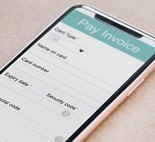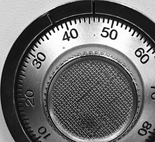Latest news
Cyberbullying Teenagers
Author: Source: Edited from the Raising Children Network | Date: 10/05/2020

When young people experience bullying behaviour online, it can be difficult to spot. To help your child, you can learn about cyberbullying – what it is, when to step in, and what to do about it.
Did you know?
In a recent study; 20% of all teenage girls surveyed said they’d been cyberbullied.
The problem was most common in girls – nearly 1 in 4 reported having been the victim of cyberbulllying.
What is cyberbullying?
Cyberbullying is online bullying using modern communication technology to deliberately and repeatedly harrass, humiliate, embarrass, torment, threaten, pick on or intimidate someone.
Cyberbullying happens in lots of different ways – by mobile phone, text messages, email, or through social networking sites such as Facebook. Examples of cyberbullying include sending anonymous threatening emails, spreading rumours on the school e-bulletin board to break up friendships, or setting up an unkind or unpleasant fake social networking account using real photos and contact details.
Effects of cyberbullying
Cyberbullying can leave teenagers with low self-esteem, less interest in school and a deep sense of loneliness. Some feel they have no safe place, because the bullying can happen anywhere there’s internet or mobile access. It can also happen at any time of the day or night.
Nearly one quarter (23%) of children who use mobile phones have reported receiving a threatening or abusive text, and 14% reported sending one.
Helping your child avoid cyberbullies
You can help make cyberbullying less likely to happen to your child by:
• Discussing cyberbullying when your child first starts to use the internet or a mobile phone. Talk about what forms cyberbullying can take, the consequences it can have, and how it’s best to never pass along or reply to bullying material
• Talking with your child about online friends and messaging friend lists. Explain that adding someone your child doesn’t really know as a ‘buddy’ or ‘friend’ gives that person access to information about her that could be used for bullying.
• Teaching your child not to give out passwords to friends. Some teenagers do this as a sign of trust, but a password gives other people the power to pose as your child online.
• Teaching your child to ‘think before posting’. Young people who post personal information online (like suggestive photos or videos) can also attract unwanted attention, negative comments or ridicule. This kind of personal information might be available online for a long time, well after your child is comfortable with other people seeing it.
A recent study suggested that 20% of teenagers have engaged in cyberbullying behaviour at some point. There’s no denying that cyberbullying is harmful. But if 20% of teenagers have engaged in bullying or been bullied, that means that 80% are using the internet happily and responsibly.
How to spot cyberbullying
Cyberbullying can be tough to spot. Many young people who are being bullied don’t want to tell teachers or parents, perhaps because they feel ashamed or they worry about losing their computer privileges at home.
As a parent, you might find it hard to keep up with the different technologies your child uses. Or you might not know how to bring up the subject of cyberbullying.
Some warning signs that your child might be the victim of cyberbullying include:
• Being upset during or after using the internet
• Withdrawing from friends and activities
• Being more moody than usual, or showing obvious changes in behaviour, sleep or appetite
• Spending much longer than usual online, or refusing to use the computer at all
• Exiting or clicking out of a computer activity if a person walks by
• Avoiding school or group gatherings
• Bringing home lower marks than usual
• ‘Acting out’ in anger at home
• Having trouble sleeping
• Feeling sick or complaining of frequent headaches or stomach aches.
Worried your child might be the one doing the bullying? For ideas on encouraging your child to treat other people with respect online, you could read our article on being a responsible cybercitizen.
Helping teens handle cyberbullying
If teenagers are being bullied online, it’s great for them to feel they have some power to resolve the problem on their own. These six steps are a good way for your child to get rid of the bully:
• Go block or delete the person engaging in cyberbullying. Blocking from friend lists helps stop the person engaging in cyberbullying from posting or uploading offensive content about your child. If it’s a text message or call, you can call the service provider and have the calls/texts monitored. If necessary, the service provider can even contact the sender, since mobile phone holders breech their contract if they use their phone to bully. If necessary, you can change the phone number.
• Ensure you keep evidence of bullying. Save and print out any bullying messages (use the print screen key, at the top right of most keyboards).
• Tell someone. Sharing feelings with a parent, older sibling, relative, teacher or close friend will help keep your child from feeling isolated.
• Report abuse. Reporting bullying to web administrators is usually as easy as clicking on a ‘report abuse’ link on a website. The website will remove the offensive content. There could also be consequences for the person engaging in bullying. If your child has been threatened, he should also report it to the local police.
• Ignore bullying behaviour. This means not responding aggressively to taunts. It’s OK for your child to tell the person engaging in bullying to stop, but they shouldn’t try to fight fire with fire.
• Delete the bullying message (after saving a copy), and don’t forward via text or send chat logs to others.
You might like to check out our illustrated guide to stopping cyberbullying. It’s a handy reference that you could print out for both you and your child to use.
Helping teens who have been cyberbullied
Your child won’t always be able to solve cyberbullying problems independently. It’s always worth stepping in if you’re concerned about them, as you’ll be able to help practically and emotionally.
Loving support is vital. Also:
•Talk to your child – listen to his side of the story, and reassure him that the bullying isn’t his fault
•Let your child know that you’ll help and that things will get better
•Stay calm and resist the temptation to ban the internet in your home. Banning online activities will only make your child less likely to share her online problems
•Speak with the school if the problem involves a classmate. It’s best to make sure your child knows about your interaction with the school, and that he has a say in the process.
How cyberbullying is different from other bullying
Cyberbullying is different from other kinds of bullying, for both the person engaging in bullying and the victim.
People using bullying behaviour will often act more boldly online than if they were facing their victim in person. Sending taunts remotely and anonymously makes the person doing the bullying feel safer. The victim’s physical or emotional response, which might change or soften the bullying behaviour, can’t be seen.
For the person being bullied, cyberbullying is tough to deal with. Because teenagers use mobiles and the internet so often, bullying can happen at any time, not just when they’re at school. The victim might not know who’s doing the bullying or when the bully will strike next. This can make teenagers feel persecuted and unsafe, even at home.
Source: Edited from the Raising Children Network





